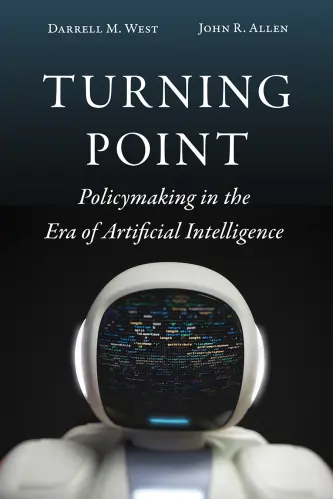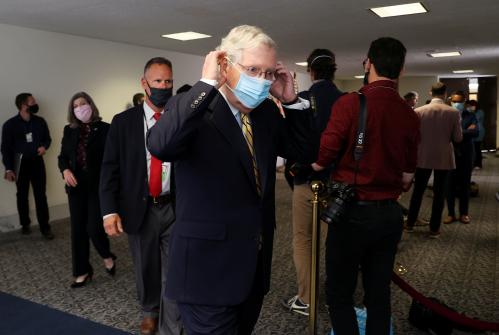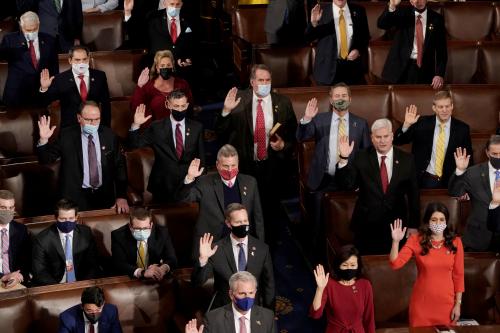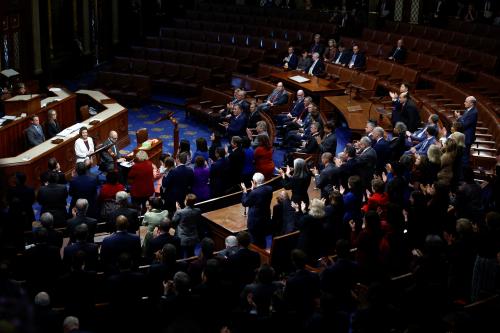On October 15, the House Select Committee on the Modernization of Congress released its final report with a list of 97 recommendations to improve the efficiency and effectiveness of the House of Representatives. The bipartisan committee flagged several proposals “for future consideration,” among them, a proposal for the establishment of a House Technology Working Group, a recommendation we offered through our report for the American Political Science Association’s (APSA) Congressional Reform Task Force. Following a broad survey of the state of “technology and innovation” in the House, we identified a lack of coordination and information sharing within the institution as the single most significant point of failure for the chamber’s technology and innovation efforts. Our proposed Working Group establishes a vehicle—consistent with House culture, process, and traditions—for addressing the coordination problem.
The Select Committee was established at the beginning of the 116th Congress with a mandate to “investigate, study, make findings, hold public hearings, and develop recommendations on modernizing Congress.” Led by Chair Derek Kilmer (D-WA) and Vice Chair Tom Graves (R-GA), the committee operated in a fully bipartisan manner, with equal numbers of Democrats and Republicans working together to find consensus—remarkably passing every recommendation by unanimous vote.
Among the Select Committee’s specific charges was to investigate ways for the House to make more effective use of “technology and innovation.” The APSA Congressional Reform Task Force tasked the three of us with making recommendations in this area. Our analysis highlighted examples of technical deficiencies within the House, identifying misaligned incentives, lack of input from frontline staff, market failures, and contractor lock-in as just a few of the reasons for ineffective technology that negatively impacts the productivity and responsiveness in the House. These problems we found were not simply technical; they were organizational.
The House of Representatives faces a unique organizational challenge, especially with respect to technology decisions, due to the decentralization of decisionmaking authority within the chamber. Among the 20 committees, 441 member offices, and myriad operational and policy support offices, each unit or office makes relatively independent decisions about the purchase and implementation of technology. Unlike other institutions of the size and scale of the House or Senate, no central information technology (IT) office is responsible for purchasing site licenses, building infrastructure, mandating security protocols, recommending best practices, and in general deploying technology across the chamber. Instead, each office works in a silo and these offices rarely talk to each other or collaborate on tech issues.
With our experience as political scientists (Abernathy and Esterling) and a former Congressional staffer (Harris), we understood that organizational recommendations would need to fit within the constraints of the existing institution. On the one hand, we wanted to recommend an organizational change that could curate expertise, facilitate knowledge-sharing, and enhance the House’s capacity to deploy technology. On the other hand, a traditional IT coordinating office would not be workable in the House as it would not comport with the dispersed and independent authorities within Congress. We recognize that no operations office can tell committee chairs how to run their committees or members how to run their offices.
Weighing these important realities, our proposed House Technology Working Group would allow for coordination and information sharing about technology within the institution. This new entity would be composed of relevant members and staff from across the chamber and would serve as a forum for collaboration, consultation with outside experts, implementation of pilot projects to evaluate technology for use in the House, and dissemination of technology best practice recommendations. The Working Group would establish task forces that would focus on particular areas—cybersecurity, member office technology, district office technology, committee technology, and operations—and their work would be overseen by a leadership council that could set priorities and ensure that the task forces have adequate staff and funding.
This proposed working group draws inspiration from several successful projects within the House. For example, the Bulk Data Task Force and the Communicating with Congress initiative each brought together outside experts with members and staff to improve the institution’s technology. In the case of the Task Force, transparency advocates, researchers, and technology developers made the case to the House that bulk legislative data would be helpful for their own work. The Task Force has been so successful that the Select Committee specifically recommends that it be made permanent and be renamed the Congressional Data Task Force.
The House Technology Working Group aligns with other proposals offered by the Select Committee. For example, the Select Committee recommended creation of a Congressional Digital Services Task Force to explore instituting a working group to design and develop new technology that could improve the congressional workflow. By bringing together members and staff from across the House and facilitating and assessing technology pilot projects, the Working Group would provide an effective framework for testing and evaluating new technology and tools developed by a Congressional Digital Services Task Force. The Select Committee also recommended reforms to House Information Resources (an administrative unit under the House Chief Administrative Officer) that would streamline the IT vendor approval process and improve the IT services it provides.
In a similar vein, the House Technology Working Group could advance the work of the newly created Modernization Staff Association, a bipartisan group of House staffers whose goal is to recommend improvements in technology and operations that can better support the work of staff across the House. Staff are often most aware of the pain points in existing technology and processes, and the Modernization Staff Association has been active in making its own recommendations to the Select Committee as well as developing best practice guides. The Working Group would provide an important venue for staff expertise to inform technology recommendations for the chamber.
Our report also provides dozens of specific recommendations for technology to support lawmaking, constituent engagement, and internal operations. We were mindful, however, not to recommend that the House simply download the latest app or technology solution to layer upon an existing and inefficient organizational structure. Instead, the Working Group provides a dynamic process for continuous identification of pain points, coordination and testing of potential solutions, and ongoing optimization across different offices. The Working Group would provide a focal point for new ideas and a forum for knowledge-sharing. Recent examples of House offices collaborating to support a fast transition to remote work reflect promising developments—the Working Group would build on this new momentum.
We believe our recommendation is a practical, simple, and low-cost way to truly modernize Congress and were encouraged to see the Select Committee recommend the House Technology Working Group for future consideration.
The Brookings Institution is committed to quality, independence, and impact.
We are supported by a diverse array of funders. In line with our values and policies, each Brookings publication represents the sole views of its author(s).












Commentary
Modernizing congressional tech will require old fashioned collaboration
November 19, 2020